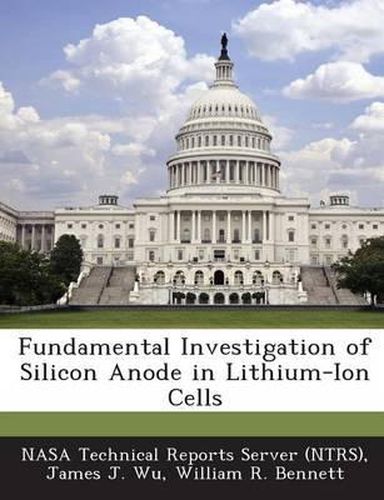Readings Newsletter
Become a Readings Member to make your shopping experience even easier.
Sign in or sign up for free!
You’re not far away from qualifying for FREE standard shipping within Australia
You’ve qualified for FREE standard shipping within Australia
The cart is loading…






Silicon is a promising and attractive anode material to replace graphite for high capacity lithium ion cells since its theoretical capacity is 10 times of graphite and it is an abundant element on Earth. However, there are challenges associated with using silicon as Li-ion anode due to the significant first cycle irreversible capacity loss and subsequent rapid capacity fade during cycling. Understanding solid electrolyte interphase (SEI) formation along with the lithium ion insertion/de-insertion kinetics in silicon anodes will provide greater insight into overcoming these issues, thereby lead to better cycle performance. In this paper, cyclic voltammetry and electrochemical impedance spectroscopy are used to build a fundamental understanding of silicon anodes. The results show that it is difficult to form the SEI film on the surface of a Si anode during the first cycle; the lithium ion insertion and de-insertion kinetics for Si are sluggish, and the cell internal resistance changes with the state of lithiation after electrochemical cycling. These results are compared with those for extensively studied graphite anodes. The understanding gained from this study will help to design better Si anodes, and the combination of cyclic voltammetry with impedance spectroscopy provides a useful tool to evaluate the effectiveness of the design modifications on the Si anode performance.
$9.00 standard shipping within Australia
FREE standard shipping within Australia for orders over $100.00
Express & International shipping calculated at checkout
Stock availability can be subject to change without notice. We recommend calling the shop or contacting our online team to check availability of low stock items. Please see our Shopping Online page for more details.
Silicon is a promising and attractive anode material to replace graphite for high capacity lithium ion cells since its theoretical capacity is 10 times of graphite and it is an abundant element on Earth. However, there are challenges associated with using silicon as Li-ion anode due to the significant first cycle irreversible capacity loss and subsequent rapid capacity fade during cycling. Understanding solid electrolyte interphase (SEI) formation along with the lithium ion insertion/de-insertion kinetics in silicon anodes will provide greater insight into overcoming these issues, thereby lead to better cycle performance. In this paper, cyclic voltammetry and electrochemical impedance spectroscopy are used to build a fundamental understanding of silicon anodes. The results show that it is difficult to form the SEI film on the surface of a Si anode during the first cycle; the lithium ion insertion and de-insertion kinetics for Si are sluggish, and the cell internal resistance changes with the state of lithiation after electrochemical cycling. These results are compared with those for extensively studied graphite anodes. The understanding gained from this study will help to design better Si anodes, and the combination of cyclic voltammetry with impedance spectroscopy provides a useful tool to evaluate the effectiveness of the design modifications on the Si anode performance.